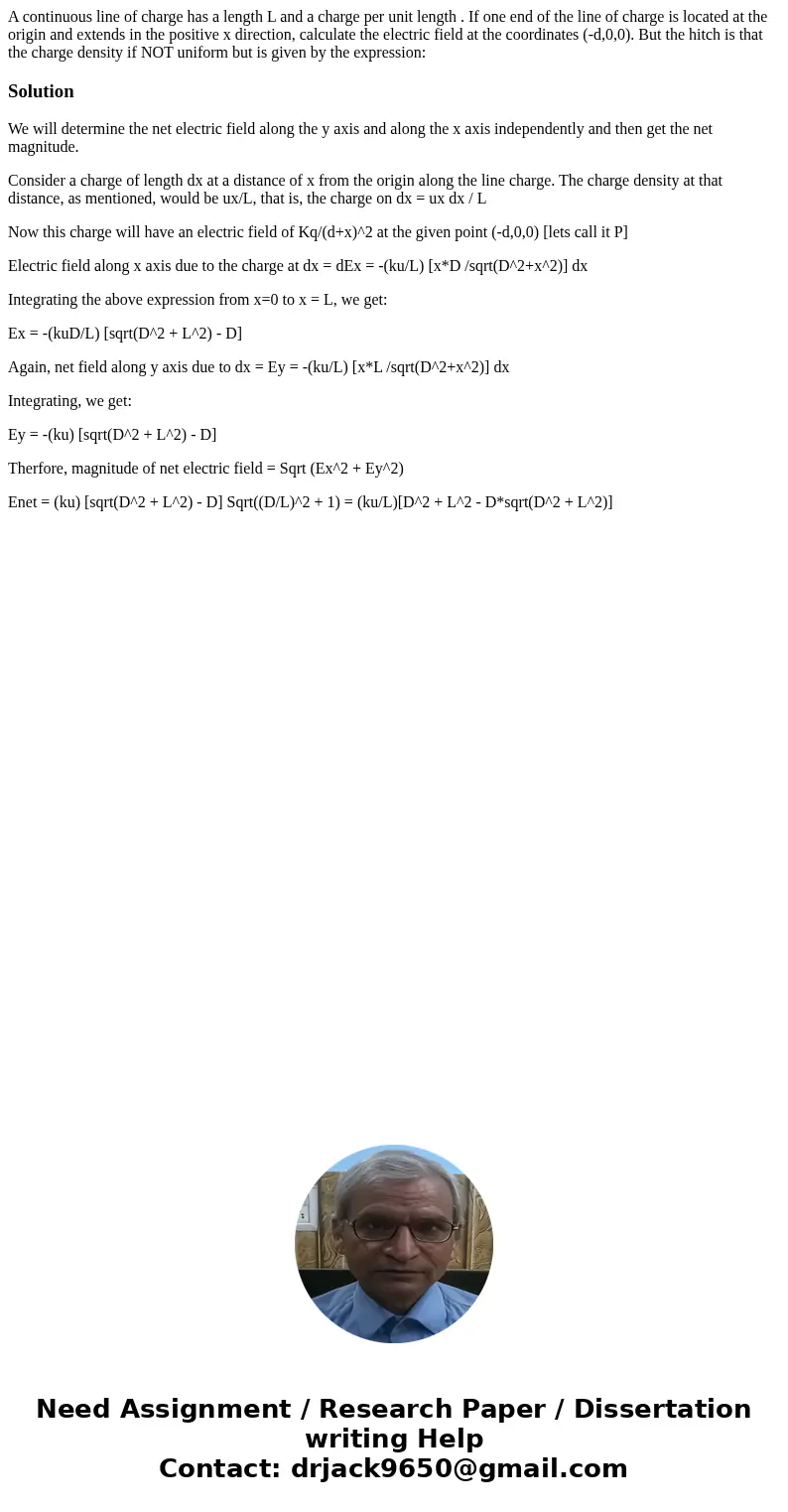A continuous line of charge has a length L and a charge per
A continuous line of charge has a length L and a charge per unit length . If one end of the line of charge is located at the origin and extends in the positive x direction, calculate the electric field at the coordinates (-d,0,0). But the hitch is that the charge density if NOT uniform but is given by the expression:
Solution
We will determine the net electric field along the y axis and along the x axis independently and then get the net magnitude.
Consider a charge of length dx at a distance of x from the origin along the line charge. The charge density at that distance, as mentioned, would be ux/L, that is, the charge on dx = ux dx / L
Now this charge will have an electric field of Kq/(d+x)^2 at the given point (-d,0,0) [lets call it P]
Electric field along x axis due to the charge at dx = dEx = -(ku/L) [x*D /sqrt(D^2+x^2)] dx
Integrating the above expression from x=0 to x = L, we get:
Ex = -(kuD/L) [sqrt(D^2 + L^2) - D]
Again, net field along y axis due to dx = Ey = -(ku/L) [x*L /sqrt(D^2+x^2)] dx
Integrating, we get:
Ey = -(ku) [sqrt(D^2 + L^2) - D]
Therfore, magnitude of net electric field = Sqrt (Ex^2 + Ey^2)
Enet = (ku) [sqrt(D^2 + L^2) - D] Sqrt((D/L)^2 + 1) = (ku/L)[D^2 + L^2 - D*sqrt(D^2 + L^2)]

 Homework Sourse
Homework Sourse